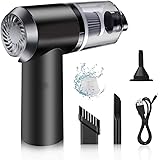Introduction:
Tattoo aftercare is an essential part of the tattooing process. Without the right care, your new ink can lose its vibrancy, scab over, or even lead to infection. One of the most recommended products for maintaining the freshness and clarity of your tattoo is tattoo balm. But when exactly should you start using it? In this article, we’ll dive deep into the right time to apply tattoo balm, its importance in aftercare, and how to use it for the best results. Ensuring you care for your tattoo properly will help it heal beautifully and last a lifetime.
What is Tattoo Balm?
Tattoo balm is a moisturising product designed specifically for use on new tattoos. It is typically made from natural ingredients that soothe, protect, and hydrate the skin. Tattoo balm differs from regular moisturisers in that it is formulated to meet the unique needs of healing tattooed skin, which is more prone to irritation, scabbing, and infection.
Tattoo balms often contain ingredients like shea butter, coconut oil, beeswax, and vitamin E. These natural components are known for their healing properties, helping to calm inflamed skin, prevent cracking, and lock in moisture. As your tattoo is essentially an open wound, using a balm ensures the area stays protected while promoting faster healing.
Benefits of Using Tattoo Balm
Promotes healing: The active ingredients in tattoo balm can help speed up the healing process by keeping the skin soft and hydrated.
Reduces itching and irritation: As your tattoo heals, it may become itchy. Applying balm can soothe the skin, reducing discomfort.
Prevents scabbing: Scabbing is a natural part of the healing process, but excessive scabbing can damage your tattoo. Tattoo balm prevents the skin from drying out too much and cracking.
Protects against infection: A well-formulated balm will help create a barrier that protects the tattooed area from dirt, germs, and bacteria.
Maintains tattoo vibrancy: Keeping your tattoo moisturised helps preserve its colour and sharpness, preventing fading over time.
Why is Tattoo Aftercare Important?
Tattoo aftercare is crucial for both aesthetic and health reasons. When you get a tattoo, your skin undergoes trauma, which requires special attention to heal properly. Neglecting aftercare can lead to various complications, such as infection, scarring, or a faded tattoo.
Using tattoo balm is one of the best ways to provide your skin with the moisture and protection it needs during the healing process. Without proper aftercare, your skin may dry out, causing the tattoo to scab excessively. This can result in patches of lost ink or blurry edges, which detracts from the quality of your tattoo.
Proper aftercare ensures that your tattoo heals smoothly, retains its colour, and remains free from infection. Moreover, it contributes to the longevity of the tattoo. After all, a well-healed tattoo looks better for longer. Uniquely is a vital component of this process because it provides your skin with the nourishment it needs to repair itself.
When Should You Start Using Tattoo Balm?
The right time to start using tattoo balm is crucial for ensuring that your tattoo heals well. Typically, you should wait 24 to 48 hours after getting the tattoo before applying any product. This initial period allows the tattoo to begin forming a natural scab and seals the open skin.
In the first 24 hours, it’s essential to follow your tattoo artist’s instructions, which often include keeping the tattoo covered with a sterile bandage and avoiding water exposure. After the first day, gently wash the tattoo with lukewarm water and a mild, fragrance-free soap. Once the skin has dried, this is usually when you can begin applying tattoo balm.
Make sure to apply the balm sparingly. The goal is to keep the skin hydrated, not to suffocate it. Over-applying can clog pores, leading to pimples or rashes in the tattooed area. Start with a thin layer and rub it in gently.
Signs It’s Time to Apply Tattoo Balm
The tattoo starts to feel dry or tight.
Your skin begins to itch.
The tattooed area looks flaky or scaly.
It’s important to note that different skin types may respond differently to tattoo balm. If you have sensitive skin, you might want to use a hypoallergenic or fragrance-free balm to avoid irritation.
How Often Should You Apply Tattoo Balm?
Once you start applying tattoo balm, you should continue to use it regularly until your tattoo is fully healed. For most people, this means applying the balm two to three times a day for the first week, reducing the frequency as the skin begins to heal.
During the first few days, your skin will require more moisture to cope with the healing process. Over time, as the scabbing reduces, you can lessen your application frequency. However, it’s crucial to ensure your tattoo remains moisturised throughout the day, as dry skin can lead to cracking and peeling.
General Guidelines for Applying Tattoo Balm:
Apply after every gentle wash of the tattoo.
Use it when the skin feels tight or dry.
Avoid over-application – a light layer is sufficient.
Continue applying the balm for at least two weeks or until the tattoo is no longer scabbing or peeling.
If you notice any redness, swelling, or excessive itching, reduce the amount of balm you’re applying and consult your tattoo artist or a dermatologist if symptoms persist. You may be experiencing a reaction to a specific ingredient in the balm.
What Are the Benefits of Using Tattoo Balm?
Tattoo balm is not just a luxury product but a necessity for proper tattoo aftercare. Here’s a detailed look at the main benefits:
Speeds Up Healing: By providing your skin with moisture, tattoo balm supports its natural healing process. This reduces the time it takes for your tattoo to heal fully.
Reduces Itching: As the tattoo heals, it can become itchy, but scratching can damage your tattoo. A good balm will soothe the area, reducing the urge to scratch.
Prevents Scabbing: Dry skin is more likely to scab, and while some scabbing is normal, too much can affect the quality of the tattoo. Tattoo balm helps maintain the skin’s moisture levels, reducing the risk of heavy scabbing.
Prevents Infection: Since a fresh tattoo is essentially an open wound, it is susceptible to infection. Ingredients like coconut oil and beeswax in tattoo balm help create a protective barrier against bacteria.
Keeps Tattoos Looking Vibrant: Properly moisturised skin holds ink better. Using tattoo balm can prevent the colours in your tattoo from fading and keep the lines sharp.
Protects Against UV Rays: Many tattoo balms include ingredients that offer some level of protection against UV rays, which can cause tattoos to fade prematurely.
What to Avoid When Using Tattoo Balm
While tattoo balm is incredibly beneficial, there are some common mistakes people make that can hinder the healing process.
Avoid Over-Application
Applying too much balm can clog your pores, trapping dirt and bacteria under the skin, leading to breakouts or infections. Instead, use a small amount and gently massage it into the skin until it’s fully absorbed.
Don’t Use Petroleum-Based Products
Many people believe that petroleum-based products, such as petroleum jelly, are great for moisturising tattoos. However, petroleum can suffocate the skin, preventing it from breathing and leading to complications like delayed healing and ink loss. Stick to natural, breathable products.
Avoid Synthetic Fragrances
Fragrance ingredients can irritate sensitive, healing skin. Opt for a fragrance-free or naturally scented tattoo balm to reduce the risk of allergic reactions.
Choosing the Right Tattoo Balm
When selecting a tattoo balm, it’s important to choose one that meets your specific skin needs. The following factors can help you make the best choice:
Natural Ingredients
Look for tattoo balms with natural, nourishing ingredients like shea butter, coconut oil, and beeswax. These ingredients are known for their moisturising properties and can help soothe irritated skin.
Hypoallergenic Formulas
If you have sensitive skin, choose a tattoo balm that is labelled as hypoallergenic. These products are formulated to minimise the risk of allergic reactions.
Vegan-Friendly Options
For those who prefer vegan products, there are tattoo balms available that contain no animal products, such as beeswax. These balms use plant-based ingredients like carnauba wax instead.
SPF Protection
If your tattoo is in a sun-exposed area, consider a balm that offers UV protection. Sun exposure can cause tattoos to fade, and using a balm with SPF can help protect your ink from the sun’s harmful rays.
Conclusion
Tattoo balm plays an essential role in your tattoo aftercare routine. Applying it at the right time—typically 24 to 48 hours after your tattoo session—helps speed up healing, reduces itching, and keeps your tattoo looking vibrant for years to come. Remember to use the balm sparingly and avoid common pitfalls, such as over-applying or using petroleum-based products. With the right care, your tattoo will heal beautifully, and you can enjoy it at its best for a lifetime.
By following these guidelines, you ensure your new ink remains in top condition, and your tattoo aftercare routine will not only help your skin heal faster but also protect the quality and longevity of your tattoo.
SHAYONAM 3IN1 Portable Car Vacuum Cleaner with Blower | USB Rechargeable Wireless Handheld Car Vacuum Cleaner Traveling,Portable,Rechargeable (Vacuum with Blower)/*-
₹699.00 (as of 15 January, 2025 11:30 GMT +05:30 - More infoProduct prices and availability are accurate as of the date/time indicated and are subject to change. Any price and availability information displayed on [relevant Amazon Site(s), as applicable] at the time of purchase will apply to the purchase of this product.)ATOM Digital Kitchen Food Weighing Scale For Healthy Living, Home Baking, Cooking, Fitness & Balanced Diet. | 1 Year Warranty | 10Kg x 1gms with 2 Batteries Included, SF400/A121, Color May vary
₹189.00 (as of 15 January, 2025 11:26 GMT +05:30 - More infoProduct prices and availability are accurate as of the date/time indicated and are subject to change. Any price and availability information displayed on [relevant Amazon Site(s), as applicable] at the time of purchase will apply to the purchase of this product.)Boldfit Water Bottles Stainless Steel Water Bottle 1 Litre Steel Water Bottles for School, Office, Home, Gym 1 Litre Water Bottle for Men Leakproof, Rust Free Steel Bottle -1000 ml Water Bottle Black
₹284.00 (as of 15 January, 2025 11:30 GMT +05:30 - More infoProduct prices and availability are accurate as of the date/time indicated and are subject to change. Any price and availability information displayed on [relevant Amazon Site(s), as applicable] at the time of purchase will apply to the purchase of this product.)SHAYONAM Cordless Portable Wireless Pressure Washer Gun 48V 12000mah High Pressure Water Gun for Car Wash Bike Washing Cleaning| Adjustable Nozzle and 5M Hose Pipe (Double_Battery)/*-
₹1,399.00 (as of 15 January, 2025 11:30 GMT +05:30 - More infoProduct prices and availability are accurate as of the date/time indicated and are subject to change. Any price and availability information displayed on [relevant Amazon Site(s), as applicable] at the time of purchase will apply to the purchase of this product.)BELOXY USB Plasma Rechargeable Electric Gas Lighter for Kitchen, Pooja Room, Candles, BBQ, Multi Purpose - 360 Degree Flexible & Windproof
₹298.00 (as of 15 January, 2025 11:30 GMT +05:30 - More infoProduct prices and availability are accurate as of the date/time indicated and are subject to change. Any price and availability information displayed on [relevant Amazon Site(s), as applicable] at the time of purchase will apply to the purchase of this product.)Discover more from The General Post
Subscribe to get the latest posts sent to your email.





